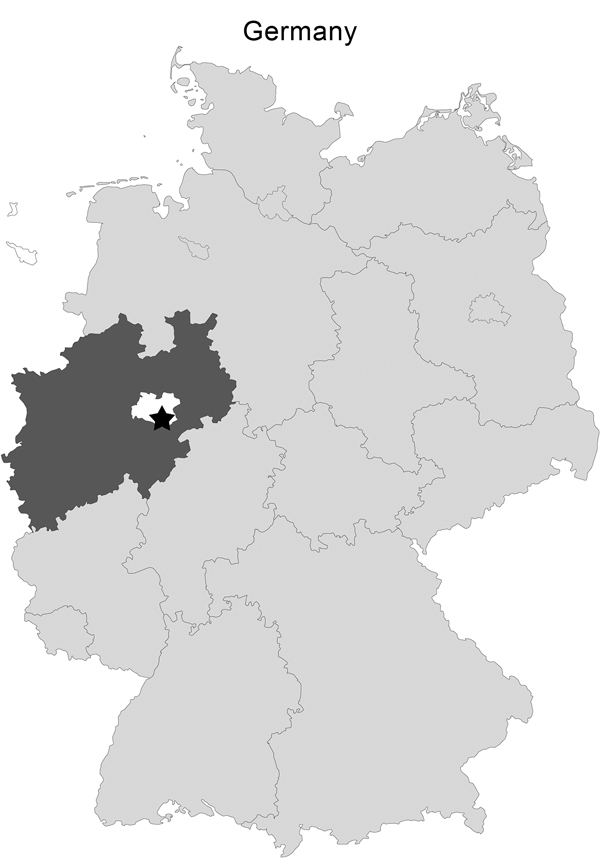Volume 21, Number 1—January 2015
Dispatch
Hare-to-Human Transmission of Francisella tularensis subsp. holarctica, Germany
Figure

Figure. Area of Germany where hares were hunted on November 2, 2012: Rüthen-Meiste (black star; latitude 51.512890, longitude 8.487493, altitude 380 m), Soest district (white) of the federal state of North Rhine-Westphalia (dark gray).
Page created: December 19, 2014
Page updated: December 19, 2014
Page reviewed: December 19, 2014
The conclusions, findings, and opinions expressed by authors contributing to this journal do not necessarily reflect the official position of the U.S. Department of Health and Human Services, the Public Health Service, the Centers for Disease Control and Prevention, or the authors' affiliated institutions. Use of trade names is for identification only and does not imply endorsement by any of the groups named above.